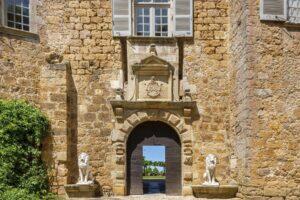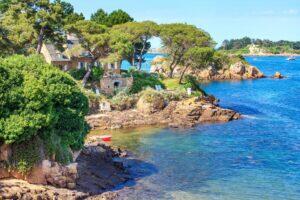Fodor's Expert Review Basilique Ste-Madeleine
In the 11th and 12th centuries, the celebrated Basilique Ste-Madeleine was one of the focal points of Christendom. Pilgrims poured in to see the relics of St-Mary Magdalene (in the crypt) before setting off on the great trek to the shrine of St-James at Santiago de Compostela, in northwest Spain. Several pivotal church declarations of the Middle Ages were made from here, including St-Bernard's preaching of the Second Crusade (which attracted a huge French following) and Thomas à Becket's excommunication of English king Henry II. By the mid-13th century the authenticity of St-Mary's relics was in doubt; others had been discovered in Provence. The basilica's decline continued until the French Revolution, when the basilica and adjoining monastery buildings were sold by the state. Only the basilica, cloister, and dormitory escaped demolition, and were falling into ruin when ace restorer Viollet-le-Duc, sent by his mentor Prosper Merimée, rode to the rescue in 1840 (he also restored the... READ MORE
In the 11th and 12th centuries, the celebrated Basilique Ste-Madeleine was one of the focal points of Christendom. Pilgrims poured in to see the relics of St-Mary Magdalene (in the crypt) before setting off on the great trek to the shrine of St-James at Santiago de Compostela, in northwest Spain. Several pivotal church declarations of the Middle Ages were made from here, including St-Bernard's preaching of the Second Crusade (which attracted a huge French following) and Thomas à Becket's excommunication of English king Henry II. By the mid-13th century the authenticity of St-Mary's relics was in doubt; others had been discovered in Provence. The basilica's decline continued until the French Revolution, when the basilica and adjoining monastery buildings were sold by the state. Only the basilica, cloister, and dormitory escaped demolition, and were falling into ruin when ace restorer Viollet-le-Duc, sent by his mentor Prosper Merimée, rode to the rescue in 1840 (he also restored the cathedrals of Laon and Amiens and Paris's Notre-Dame). Guided tours are offered every Sunday from May to August at 2:30 pm.
Today the UNESCO-listed basilica has recaptured much of its glory and is considered to be one of France's most prestigious Romanesque showcases. The exterior tympanum was redone by Viollet-le-Duc (have a look at the eroded original as you exit the cloister), but the narthex (circa 1150) is a Romanesque masterpiece. Note the interwoven zodiac signs and depictions of seasonal crafts along its rim, similar to those at both Troyes and Autun. The pilgrims' route around the building is indicated by the majestic flowers, which metamorphose into full-blown blooms, over the left-hand entrance on the right; an annual procession is still held on July 22. The basilica's exterior is best seen from the leafy terrace to the right of the facade. Opposite, a vast, verdant panorama encompasses vines, lush valleys, and rolling hills. In the foreground is the Flamboyant Gothic spire of St-Père-sous-Vézelay, a tiny village 3 km (2 miles) away.
READ LESS





